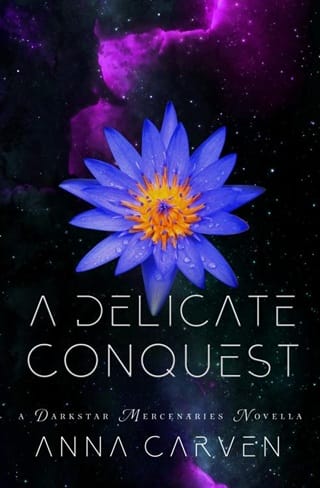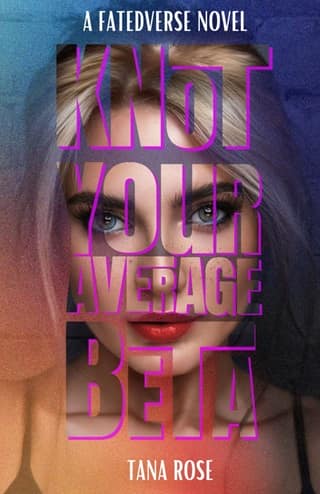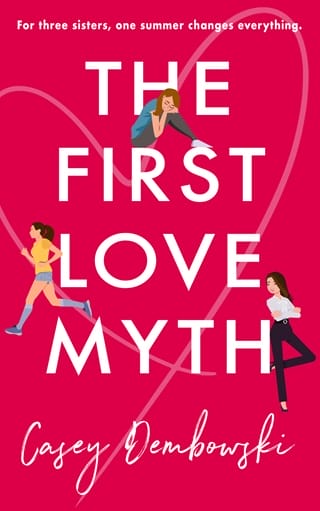Chapter 1
Monday, April 1
Any perceptive observer would recognize that the windowless room has been engineered for maximum calm. The light-taupe walls are sprinkled with pastel acrylic abstracts. The LED lighting is comfortably dim but not dark. A neutral ecru rug covers much of the hardwood flooring. The exit is clearly demarcated by the string of soft red lights lining the top of the door. And the relaxing scent of sandalwood floats through the air, the diffuser nowhere in sight.
Mocha-colored leather recliners form a crescent around Dr. Holly Danvers. Each of the seven seats is occupied. And what a hodgepodge of occupants they are: a rock star, a CEO, an activist, a fashion designer, a lawyer, a socialite, and even one of Holly’s own colleagues. To one another, they’re members of the same eclectic self-labeled “tribe.” But to Holly, they’re clients, a term she much prefers over patients.
All of them are equipped with identical black blindfolds and headphones. Each has a blood pressure cuff already wrapped around their arm and an IV bag suspended above their chair with tubes dangling below, waiting to be hooked to their forearms. But that’s where the physical similarities end. Race, size, gender, age, sexuality, and dress vary from one client to the next. Holly feels particularly protective over each of them today, but the therapist in her reminds her it’s merely a reflection of her own sense of exposure and vulnerability.
After all, today is the day the experiment leaves the laboratory.
Holly has been working with them for almost three months. They have made genuine progress, as a group and as individuals, through their weekly ritual: first, a potent intravenous dose of the psychedelic agent ketamine, followed later the same day or next by individual therapy and then a group session.
But they’re still addicts. Each with their own habit, ranging from sex and gambling to opioids and alcohol. Their hold on sobriety is new and fragile. One of them hasn’t even reached that point, but that is a secret only she and Holly share.
Eleven weeks into group therapy, Holly recognizes that all of them still have obstacles in their paths: truths they aren’t willing to admit and past traumas they are unable to confront. But her gut tells her that they’re as ready as they ever will be for a session under dual doses of two powerful psychedelics. A new step for them. And for her, at least in the clinical setting.
But Holly isn’t nearly as confident as she projects to the group. While ketamine-enhanced therapy is legal and largely accepted, none of the same holds true for the off-ramp she is about to lead her clients down. She’s going to supervise them as they self-administer a second psychedelic that has no legitimate pharmaceutical supplier and no sanctioned medical use, and in so doing, she will expose herself to potential legal and professional risk. She has reservations about a few of them, especially Elaine and Salvador, the two most anxious members. Salvador had a dysphoric reaction—what laypeople would label a “bad trip”—during one of his previous sessions. And Elaine’s needle phobia only worsens with each subsequent IV insertion.
Then why do it?
Holly sees it as a calculated risk, one worth taking if it will help to free them from the shackles of addiction. At least, that’s what she tells herself. But she realizes she’s motivated by more than simply altruism. There’s potential glory in it for her, too. Not to mention material gain—in terms of research data as well as free publicity for the book she has been contracted to write. That is, if she can demonstrate that adding a second psychedelic provides a stronger and more permanent form of abstinence.
As Holly was taught during the month she spent shadowing an anesthetist friend from med school, she has already preloaded the ketamine into the IV bags that now hang above the chairs. After the clients arrived, she tested each of their MDMA tablets using her laboratory-grade analyzer and found the pills to be pure. The group had to procure the MDMA on their own, albeit through a site Holly recommended, since she can’t prescribe it. No physician can. Besides, even in the exploding world of ketamine clinics and other plant-based wellness centers, none offer therapy combining two such potent psychedelics. Or if they do, none dare to publicize it.
Elaine Golding squeezes her eyelids shut and whimpers as Holly inserts the IV needle into her forearm. Fortunately, it slides into the vein with ease. Elaine gasps with relief, as if she has just jumped back onto a curb and narrowly avoided an onrushing truck.
Once all the IVs are secure and the last of the seven clients have swallowed their MDMA tablets, Salvador Jimenez raises his arm as if about to ask a question in class. Despite his meteoric rise in the LA fashion world, the designer looks and sometimes acts like a child. It doesn’t help that his round face is accentuated by an ever-present, undersized ball cap.
“They call this kitty flipping, don’t they?” Salvador asks with a giggle.
Holly frowns. “They?”
“Y’know. Like on the street.”
“The mean streets,” Baljit Singh grunts. “That makes us sound so badass. So Narcos. Not the whiny bunch of entitled elites we actually are.”
The real estate CEO gives off almost the opposite vibe as Salvador. Baljit isn’t much older than him, but with her impenetrable self-assuredness and edgy cynicism, she could pass for his mother. And her outfits—like the tailored blue blazer, matching skirt, and gold hoop earrings she wears today—epitomize the power executive look. Still, Baljit’s gambling addiction is just as self-destructive as Salvador’s dependence on Adderall and cocaine, though she tries to hide it with a “baller” attitude.
Holly offers them a patient smile. “Remember, our sessions have nothing to do with recreational use.”
Clients often ask, particularly members of this group, how it’s possible to treat addiction using psychedelics. Aren’t you just substituting one habit for another? is the common refrain. But Holly always takes the time to explain how psychedelic agents like ketamine, MDMA, or even LSD represent an alternate class of medication, which works differently on the human brain. How, despite the recreational use and abuse of LSD, it was still the most widely studied psychiatric drug in the 1960s. How it showed more promise for treating alcoholism than any drug has before or since. And how, unlike other psychiatric medical treatments, such as antidepressants, psychedelic therapy is limited to a finite number of sessions over weeks to months.
“Why do recreational users call it ‘kitty flipping’?” demands Dr. Liisa Koskinen.
Fair-skinned, with a stern blond bob and always garbed in formless dresses, the middle-aged client is also a colleague—a clinical psychologist, not a psychiatrist like Holly—who happens to suffer from a crippling Xanax addiction. Liisa rarely misses an opportunity to question Holly’s therapeutic approach.
Holly nods. “Among recreational users, a psychedelic experience with just ketamine is considered a trip. And one with MDMA—”
“Ecstasy, right? The love drug?” interjects Justine Jang, or “JJ” as everyone refers to her, including herself. The third-generation Southern Californian of Korean heritage is a household name in Laguna Beach. And not only because she’s the heiress to one of the region’s largest family fortunes. Because she stands barely five feet tall, JJ’s bubbly, larger-than-life personality is even more striking relative to her tiny frame. Holly knows JJ to be in her late forties, but she can’t tell if it’s genetics or Botox that keeps her face wrinkle-free and ageless.
“Some call it Molly, too,” Elaine points out. The activist is pale, and Holly suspects anticipatory anxiety.
“Not here,” Holly says. “Here we only use proper pharmaceutical names.”
“They say that if you trip on ketamine and you roll on MDMA—” Salvador begins.
“Then you flip when you combine the two!” roars Simon Lowry, the aging rock star, whose lionlike mane of gray hair and beard shakes as he laughs.
“I won’t let you flip.” But even as Holly says it, her gut rumbles again. “No question, combining psychedelics is a more intense sensorineural experience. One that is usually accompanied by markedly altered perceptions.”
Elaine shifts nervously in her recliner. With her haunting good looks, gaunt but with exquisite bone structure, like Kate Moss, she could have become a runway model instead of one of the most vocal advocates for opioid recovery. Even while she was continuing to secretly use them. “You mean hallucinations, don’t you, Dr. Danvers?”
“Those, too. Almost always, in my experience,” Holly says, but what she really means is in her self-experimentation. “And, it’s during that fully dissociative state when the deepest breakthroughs occur.”
“All of which you explained in detail last week,” sighs Reese Foster. Tall and willowy, Reese has cropped brown hair, a heart-shaped face, and deep-set hazel eyes that come together in a distinctive but attractive visage. The Newport Beach?based lawyer sometimes approaches these sessions as if she might be losing billable hours. And Reese is clearly impatient to proceed as she fiddles with her blood pressure cuff.
“You totally did, Dr. Danvers!” JJ interjects, practically beaming as she nods to Reese.
All seven clients came into group therapy as strangers, but Holly has noticed how often JJ tends to side with and defer to the younger lawyer. Holly often catches them sharing glances, laughs, or even eyerolls. She wonders if the bond between the two of them is related to the fact that they’re the only members of the group who share an addiction: alcoholism.
But Reese is right. At the end of the previous session, Holly had explicitly warned the group of the potentially terrifying fracture of reality that can result from combining psychedelics and the inevitable serotonin storm they provoke inside the brain. It didn’t deter them. All seven members willingly—maybe too eagerly—agreed to proceed. And they all signed waivers.
“I still need to confirm it with you here and now that you’re aware of the risks,” Holly says as she scans the sets of eyes focused on her. “If any of you have doubts or second thoughts, the MDMA tablets you already ingested will be more than enough for our later counseling debrief.” She glances over to the far recliner on her left. “Salvador, would you still like to proceed with the ketamine?”
He utters another nervous chortle and twists his ball cap around backwards. “Sure. Let’s flip this kitty.”
With a smile almost as wide as her face, JJ is vehemently nodding even before Holly asks her. The other clients each reiterate their consent with a nod, a thumbs-up, or, in Simon’s case, a fist pump along with a holler of “Fuck, yeah!”
“All right,” Holly says. “Remember it’s all about the—”
“Set and setting!” Baljit moans. “We know. This isn’t exactly our first rodeo.”
“Maybe so, but I’m going to remind you every time. A positive mindset coupled with the calmest surroundings guarantee the best possible experience under psychedelics. So, please lower your blindfolds and go to your warmest and happiest memory or place in your mind.”
Fifteen minutes later, with the MDMA absorbed from their guts and the ketamine pumping through their bloodstreams, the clients are all under the influence. Technically speaking, they’re anesthetized.
Reclined in their chairs with the blindfolds down and headphones on, each manifests a different response to the potent combination of drugs. JJ’s huge smile is glued to her glossed lips, and Holly knows where she must be in her head: on that lanai in Kauai, proudly holding up her positive pregnancy test to show her first husband. Reese is dead still in the recliner beside her. Baljit rolls her shoulders as if they’re being massaged. Salvador wiggles in his seat. Elaine grips both armrests, her knuckles white. Liisa picks at the air above her. And, not surprisingly, Simon is singing.
Aside from Simon’s soft falsetto and the near constant buzz of one or the other of the blood pressure cuffs automatically inflating and deflating, the room is otherwise quiet. No sound leaks out from under the headsets, which play individualized soundtracks, ranging from nature sounds to jazz, as chosen by the clients themselves.
Soon, Baljit, Elaine, and Salvador go still, too. Even Simon stops singing. And while Liisa continues to strum the air above her, the motion is as peaceful as if she’s playing an imaginary harp.
But for some paradoxical reason, the tranquility surrounding Holly only heightens her vigilance. She holds a syringe full of midazolam—the powerful, short-acting version of Valium—ready to dose anyone who experiences a dysphoric rection.
Why do I keep expecting the worst?
A little voice inside responds: Because the worst already happened, and it’s been haunting you ever since.
 Fullepub
Fullepub 



